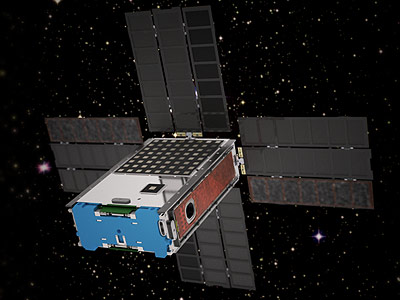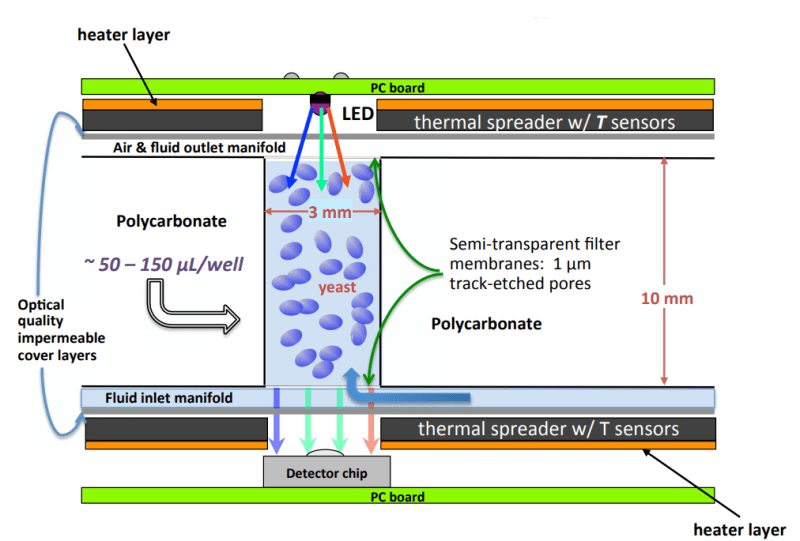It’s a truly exciting time for space enthusiasts. Humanity is finally shaking itself out of the half-century-long doldrums of deep space exploration and planning a return to the Moon and a push to Mars. Yes, exciting things have happened since the glory days of Apollo. We’ve reached out into the outer planets, drilled holes in asteroids, and made tracks across the face of Mars in an improbably durable rover. We’ve built magnificent space telescopes, created a permanent space station to replace a couple of temporary ones, and put an intricate constellation of satellites into service.
Those are all laudable achievements, but not a single living creature has intentionally achieved approached Earth escape velocity since three astronauts and five mice did it aboard Apollo 17 at 3:46 AM on December 7, 1972. Since then, we’ve all been stuck down here at the bottom of Earth’s gravity well, with only a lucky few of us getting a tease of what space travel is really like with low Earth orbit (LEO) missions.
But if NASA has its way, and certain difficulties with launch vehicles can be ironed out, in 2020 Earthlings will once again slip the surly bonds and make a trip to deep space. Of course those Earthlings will just be cultures of yeast carried into orbit around the Sun on a cubesat, but it’s a start, and it’s a good bet that more complex organisms won’t be far behind.
You Go First…

The baby step of returning to deep space by sending microorganisms as our proxy is probably wise. After all, we’ve had fifty years to lose our edge, and getting something expendable to go first makes sense. We’ve also lost the urgency that sent the Apollo astronauts lunging into the unknown in upgraded ICBMs, driven by an intense Cold War competition where success at the cost of human life was acceptable and even expected.
We won’t be so cavalier after fifty years, and making sure we get things right will be critical before humans get launched on deep-space missions. To that end, NASA proposes the BioSentinel mission. BioSentinel seeks to develop biosensors to measure radiation effects on living creatures in the space beyond LEO, a hostile environment that is difficult to simulate on Earth and in which no human has spent more than a week.
BioSentinel will use one of Earth’s oldest and tastiest model organisms, Saccharomyces cerevisiae, or brewer’s yeast, to see just how much DNA damage deep-space radiation will cause during extended manned missions. The BioSentinel cubesat, a briefcase-sized solar-powered package, will head to the Moon for a lunar flyby, and from there it will enter into a heliocentric orbit for a mission duration of six to twelve months.

The heart of BioSentinel is a deck of microfluidics cards – small plastic plates similar to microtiter plates. Each plate has 16 wells etched into it to hold genetically engineered yeast cells in a dried state. Half of the wells have a yeast strain where the RAD51 gene, which codes for enzymes important to repairing DNA from radiation-induced damage, has been deleted. The other eight wells have yeast with the wild type gene, which has a normal ability to repair radiation damage.
Once the cubesat has transitioned out of the protective environment of Earth’s magnetosphere, individual cards will be rehydrated. The yeast cells will remain largely dormant until radiation causes a double-strand break (DSB) in the DNA. If the break is successfully repaired, the yeast in that well will grow exponentially and become metabolically active, which can be detected by alamarBlue, an organic dye that turns from blue to fluorescent pink by reduction reactions within living cells. The viability of the cells is measured by pumping the media into a chamber with an RGB LED and a detector chip; the pinker the well, the more metabolically active the cells are.
Playing The Hole Card

The BioSentinel mission profile calls for periodically rehydrating cards, each of which lasts for about a week. Identical experiments aboard the ISS as well as two on Earth, one under typical Earth conditions and one in a space-radiation simulation chamber, will undergo identical experiments at the same time. This will provide controls as well as data to correlate LEO and deep-space exposure, and allow us to assess our ability to simulate deep-space radiation on Earth.
BioSentinel also contains electronic radiation sensors that can detect a powerful radiation storm known as a Solar Particle Event (SPE). If the satellite should wander into one of those storms, a card kept in reserve for just such an occasion will be rehydrated and measured, to assess the potential effects of a severe radiation storm, something that deep-space travelers will no doubt have to deal with.
The original plan was for BioSentinel to fly as a secondary payload on EM-1, the first Exploratory Mission for Space Launch Systems. But as we recently learned, funding for SLS was cut from NASA’s 2020 budget. EM-1 has been rebranded as Artemis 1, and BioSentinel is one of thirteen secondary payload cubesats slated for deployment aboard it. If all goes well, the SLS Block 1 rocket will take off from the historic Launch Complex 39B at Cape Kennedy in June 2020, and begin sprinkling its payloads into their orbits.
As uninspiring as it may be to follow a satellite stuffed with fungus into space, BioSentinel is poised to answer critical questions about long-duration manned missions in deep space. The DNA repair mechanisms in yeast are extremely well conserved genetically, and the genes they carry are almost the same as the genes human cells carry for DNA repair. What happens to them will likely happen to us, and sending them first makes sense. We need to characterize the radiation regime out there before we can effectively protect ourselves from it, and if it means a few million yeast cells make it back to deep space before we do, then so be it.















What in the hell happened to my Hackaday feed?
It is gray lettering on a white background!
looks like a problem with the wordpress theme ..
Our host is having issues with a bunch of sites. It was totally down for a while, so at least it’s somewhat back. Should be fixed soon.
It’s actually not a horrible look this way. OK, yes it is.
oddly hackaday.io looks fine.
Looks fine on my 286…
https://ibb.co/ySFTwW4
https://ibb.co/XyNg7LS
WordPress has a mechanism for defaulting to the 2019 theme when the main theme is broken. This would appear to be the case here. My guess is that your host changed your PHP version without asking and broke stuff!
Nice clean layout, I like it. :-)
But – m’dark theme…
I bet you brush your teeth and drink orange juice too ;P
It’s too zoomed but the layout isn’t bad. Just way too glaring for my nocturnal eyes!
My EYES!!!
http://www.quickmeme.com/img/28/289bc35909ca89d1c416585076ae9149e0ee10ce81593b381a65d620f769401d.jpg
Everyone is introducing the “dark mode” or a dark theme, but Hackaday! They got enlightend und turned to WHITE!
So THAT’S where they get the yeast for Romulan ale!
Earth escape velocity is 11.186 kms and Apollo 17 topped out at 11.000 kms. I’m sure I’m missing something, does someone know what?
Yeah, but that’s pretty damn close to Ve. Perhaps I should have paid attention in orbital mechanics. Or, you know, actually taken a class in it.
Fixed in text. Thanks for the pickup.
“getting something expendable to go first makes sense”: Good luck getting them into red shirts.
So they are creating a space probe with..
a yeast infection
This is probably how the Flood will get started. At least Microsoft got started with Cortana :P
That’s uh, one small step for man, one giant leap for space beer.
4.4 billion years ago in a galaxy far far away
an intelligent alien species wanted to observe influence of cosmic radiation on DNA
they sent out a probe containing primitive organisms
it crashed on Earth . . .